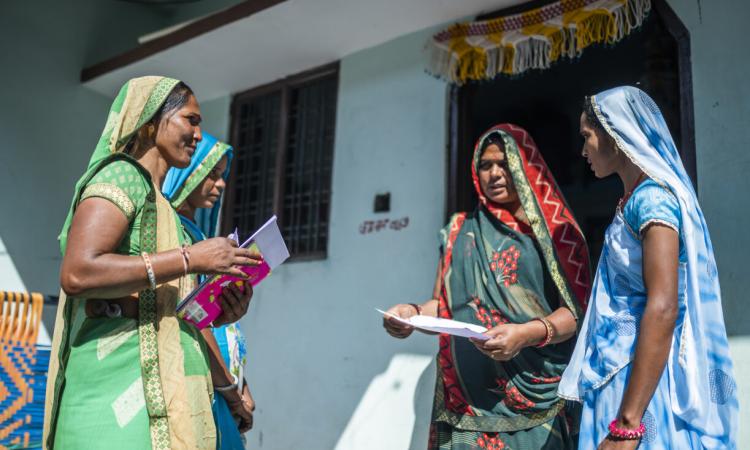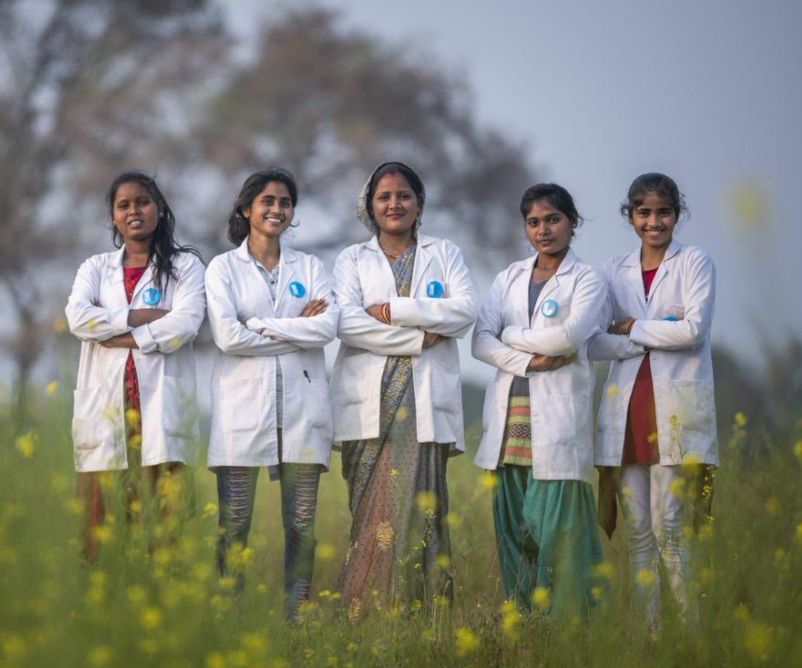
Water management is a critical global issue that intersects with gender dynamics, equity, and inclusiveness. This article explores the evolution of water policies in India, highlighting the increasing recognition of the importance of safeguarding gender, equity, and inclusiveness. It examines the disparities in access to and management of water resources, particularly focusing on the disproportionate burden borne by women and marginalised communities.
It presents strategies and initiatives aimed at promoting gender-sensitive policies, enhancing women's participation and resilience, reducing drudgery, prioritising gender inclusivity in development and innovation projects, advocating for inclusive policy implementation and monitoring, adopting a holistic approach, and promoting agency while breaking stereotypes. By addressing these issues comprehensively, societies can achieve more sustainable and inclusive water management systems, ultimately benefiting everyone.
As professor Susan Marks aptly stated, "Water is personal, water is local, water is regional, water is statewide. Everybody has a different idea, a different approach, a different issue, a different concern." This sentiment resonates profoundly in the context of India's evolving water policies and the global discourse on water governance.
The crucial nexus: Gender, equity and water management
Water is not merely a resource; it's a lifeline, a symbol of sustenance, and a cornerstone of existence. However, its management is deeply intertwined with gender dynamics, equity, and inclusiveness. At present, data to track advancements toward gender equity-related Sustainable Development Goal (SDG) targets is still developing and the evaluation of progress concerning both SDG objectives and the effectiveness of WASH (Water, Sanitation, and Hygiene) initiatives frequently lacks gender disaggregation.
Evolution of water policies in India: Recognising gender and equity
India's national water policies of 1987, 2002, and 2012 exhibit a consistent exclusion of women and gender concerns, despite women's crucial role in water management. The 1987 policy prioritised water allocation for various sectors without acknowledging women's specific needs or participation. This trend persisted in the 2002 policy, which continued to overlook gender concerns while emphasising sectoral allocations.
In 2012, although there was a shift towards ecological aspects and public-private partnerships, gender issues remained largely unaddressed. Economic considerations in the 2012 policy exacerbated gender disparities, as women struggled to afford water due to their marginalised position in the water market. Additionally, the policies failed to recognise women's productive roles in agriculture and irrigation, reinforcing existing gender inequalities.
Lack of gender-disaggregated data and gender-sensitive approaches further hindered the inclusion of women's concerns in water resource management. Despite evidence showing the positive impact of women's involvement, the policies continued to overlook gender considerations, reflecting an instrumental approach rather than genuine inclusivity. These shortcomings highlight the persistent exclusion of women and gender concerns in India's national water policies, warranting urgent attention to ensure equitable and sustainable water management.
However, the integration of gender considerations into initiatives like the Jal Jeevan Mission (JJM) signifies a positive step towards women empowerment in rural India, exemplified by their participation in management committees. Overall, there is a pressing need for continued efforts towards gender-responsive approaches in India's national water policies, aligning with SDGs and ensuring equitable access to water resources for all.
In the JJM, launched in 2019, women's involvement is exemplified through the formation of Village Water and Sanitation Committees (VWSCs), where women are encouraged to actively participate in decision-making regarding water management at the grassroots level. Additionally, the mission emphasises the establishment of Women Water and Sanitation Committees (WWSCs), specifically aimed at empowering women to take leadership roles in addressing water-related issues within their communities.
Similarly, in the Swachh Bharat Mission (SBM), the formation of Women Self-Help Groups (SHGs) and their involvement in promoting sanitation practices showcases the importance of women's participation in achieving sanitation goals. These examples highlight concrete efforts to engage women in decision-making processes. However, only time will tell if this has led to empowering them.
Gender disparities in water management: A global perspective
Current statistics pertaining to the water sector paint a stark reality. Globally, 1.8 billion people, or 16% of the population, rely on off-premises water sources, with women predominantly shouldering the burden of water carriage in about 63% of households. This fact is echoed by a recent WHO-UNICEF (2023) report that has noted that in many parts of the world, women and girls continue to embark on long journeys to collect water, which directly or indirectly impacts their education, work and leisure time.
Further, the widespread implications on their physical health and safety cannot be disregarded. Reviewing data on the representation of women in technical and managerial positions in the water sector paints a grim picture as well, as a cross-country survey by UN Water shows that women hold less than half of government WASH roles, depicting the gendered nature of power dynamics in our society. This disproportionate responsibility underscores the urgent need to rectify gender inequities in water management, particularly in low- and middle-income settings.

Gender inclusivity cross cutting through multiple domains
Gender inclusivity in water management extends beyond the confines of policy frameworks, intersecting with various domains such as human rights, ecological rights, and cultural aspects. From a human rights perspective, ensuring gender equity in water access and management is not just a matter of convenience but a fundamental right, as access to clean water is essential for human survival and dignity. Ecologically, recognising and addressing gender disparities in water management is crucial for sustainable resource use and conservation, as women often play key roles in environmental stewardship and resource management.
Furthermore, cultural norms and practices influence gender dynamics in water management, shaping access, control, and decision-making processes. Understanding and addressing these intersections is essential for developing holistic and effective strategies that promote gender inclusivity and equity in water management practices.
Policy into practice
Implementing a gender integration policy involves several key steps to ensure its effectiveness and success. This involves creating institutional mechanisms and agencies specifically dedicated to representing and empowering underrepresented genders in decision-making processes related to water management. By ensuring diverse representation, these institutions can amplify the voices and perspectives of marginalised genders, leading to more inclusive and equitable policies and practices.
Additionally, leveraging technology to develop gender-inclusive solutions, such as field-testing kits tailored to women's needs, woman friendly weeders, etc. can enhance access to and utilisation of water resources. This intersection of technology and gender sensitivity not only addresses practical challenges but also fosters empowerment and autonomy among women and marginalised genders in managing water resources effectively.
Strategies and initiatives for gender-sensitive water policies
Strategies and initiatives for gender-sensitive water policies encompass a multifaceted approach aimed at addressing systemic inequalities in water management. This involves integrating gender considerations into policy frameworks, ensuring representation and participation of women and marginalised genders in decision-making processes, and implementing concrete measures to empower women through education, access to resources, and technology.
By prioritising gender equity and inclusivity, policymakers can foster more resilient and sustainable water systems that benefit all individuals, regardless of gender, ultimately paving the way for a more equitable future. There are few intervention areas elaborated on as follows:
- Emphasising the need for gender-sensitive approaches: Policies must foster equality of opportunity and rights, align with SDG-5, and ensure inclusivity of all individuals, irrespective of gender or sexual orientation.
- Enhancing women's and transgender individual’s participation and resilience: Strategies aimed at enhancing women's and transgender individual’s participation in water-related activities are crucial. This could involve ensuring at least 50% representation of women and underrepresented genders in capacity-building programs, employment, decision making, etc.
- Reducing drudgery and promoting inclusivity: Efforts should focus on reducing the drudgery associated with water collection, particularly for women, by bringing water sources closer to households in hill settlements. Encouraging the involvement of all genders in development activities through participatory approaches can foster social harmony and empowerment.
- Prioritising gender inclusivity in innovation projects: Innovation projects addressing environmental challenges like water scarcity and deforestation must prioritise gender inclusivity. Recognising the diverse needs and experiences of different genders is essential in assessing water, sanitation, and hygiene services effectively.
- Inclusive policy implementation and monitoring: Advocating for a participatory approach where all genders equally participate in policy implementation and monitoring is crucial. Addressing gaps between policy dialogues and implementation processes is essential for promoting gender equity in water management.
- Holistic approach and institutional mechanisms: A holistic approach linking gender rights with water rights, human rights, and ecological rights is imperative. Alternative institutional mechanisms should be advocated for to ensure equitable participation and support systems.
- Promoting agency and breaking stereotypes: Encouraging the agency of women in water-related decision-making processes and breaking gender stereotypes is vital. Policies must transcend heterosexual binaries and include all genders in drafting and implementation processes.
- The intersection of climate change and gender equity in water management: Climate change exacerbates water insecurity, disproportionately impacting marginalised communities, including women. Integrating gender-sensitive approaches into climate adaptation strategies is crucial for fostering resilience and equity. Empowering women's participation in water governance is essential for achieving equity and sustainability.
Conclusion: Towards equitable and sustainable water management
The evolution of policies through a gender lens, the recognition of gender inclusivity across multiple domains, and the translation of policy into practice through institutional mechanisms are pivotal in achieving gender equity in water management. As we navigate the complex interplay of gender, equity, and water, it is imperative to strive for a future where every individual, regardless of gender, has equal access to this fundamental resource. By addressing these issues comprehensively, societies can achieve more sustainable and inclusive water management systems, ultimately benefiting everyone.
Promoting gender equity and inclusivity in water policy and practice is not merely a moral imperative but a strategic necessity. By integrating gender considerations into policy frameworks, policymakers can address the systemic inequalities that persist in water management. Moreover, by prioritising actionable initiatives that empower women and marginalised genders, communities can build more resilient and inclusive water management systems.
The intersection of water, gender, and equity presents both challenges and opportunities. However, by heeding this call to action, policymakers can harness the transformative potential of gender-sensitive approaches to build a more sustainable and equitable future for all. As we navigate the complex nexus of water, gender, and equity, let us remember that water is not just a resource; it is a fundamental human right that must be safeguarded for present and future generations.
Authors
Biswanath Sinha, Director of Policy and Technical Support at WaterAid India, boasts a 27-year career encompassing roles with Tata Trusts, PRADAN, SPWD, and Sa-Dhan. Notable for his contributions to initiatives such as the system of rice intensification (SRI), diversion based irrigation (DBI), and grassroots football development, he's also a board member for three nonprofits and has been integral in establishing high-performing organisations in the social sector.
Swagata Chetia, a Policy and Technical Support Unit member at WaterAid India, previously served as a Junior Researcher and Project Coordinator at the Center for Public Health Kinetics, and has been focusing on global initiatives for child development, nutrition, and maternal health.
Amita Pathria, an Architect and Urban Strategist with a Master’s in Urban & Regional Planning, specialises in Urban Sanitation. As a Sanitation Specialist at WaterAid India, she focuses on diverse initiatives like accessible toilets for persons with disabilities, swachh anganwadis, faecal sludge management policy, and community-led water and greywater management.
/articles/flowing-towards-equity